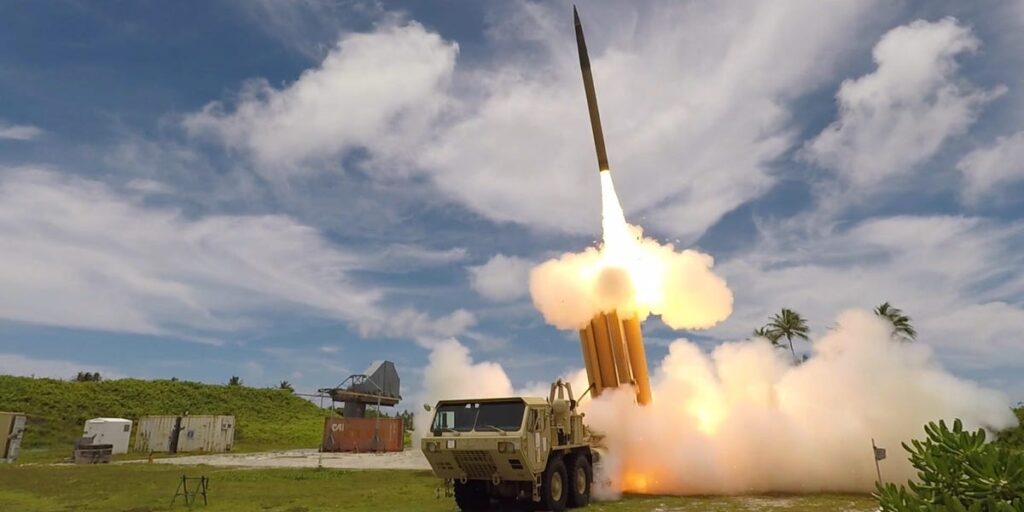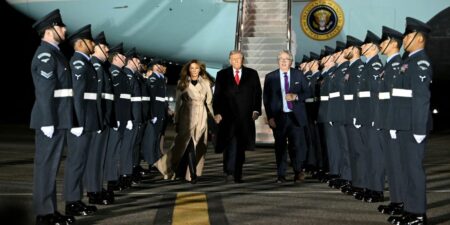The US military fired $500 million worth of top interceptor missiles to defend Israel against attacks by Iran and other regional foes, new Pentagon documents show.
The recently released budget documents offer new insight into the extent of the US military’s defense of Israel and also the weapons that American forces used during their extensive bombing of Iran’s nuclear facilities in June.
One document requests $498.265 million in funding to replace the US Army’s Terminal High Altitude Area Defense (THAAD) missile interceptors that were “expended in support of Israel.”
“This is a congressional special interest item. This is an emergency budget requirement,” the document explains. US lawmakers have to sign off on any funding changes.
THAAD is an air defense system made by the US defense contractor Lockheed Martin that is designed to intercept short-, medium-, and intermediate-range ballistic missiles during the final phase of flight.
THAAD is among the most advanced ground-based air defense assets that US forces operate. It has a long reach, able to engage targets at ranges of 93 to 124 miles both inside and outside the atmosphere. The weapon intercepts an inbound missile by striking it directly rather than exploding nearby.
The US Army began developing THAAD in the early 1990s. It entered service in 2008 and was first used in combat by troops from the United Arab Emirates in 2022 against a ballistic missile launched by the Iran-backed Houthis in Yemen.
A standard THAAD battery includes around 100 soldiers, a fire control and communications element, six truck-mounted launchers, and an advanced radar. The US Army operates seven batteries — several are deployed outside the country — and has used two of them to defend Israel from attacks by Iran and the Houthis.
THAAD received its most intense workout over a brutal 12-day stretch in early June, during which Iran fired hundreds of ballistic missiles at Israel. The US reportedly expended between 100 and 150 THAAD interceptors to shield Israel from the Iranian attacks.
Each THAAD interceptor costs roughly $12.7 million, per US Missile Defense Agency documents. The massive quantity of missiles expended during the June war — and in the wider defense of Israel — has raised concerns about insufficient American stockpiles.
Israel fields its own equivalent to THAAD called the Arrow 3. This system, and other American and Israeli air defense assets, saw a high tempo of operations during the brief — but deadly — engagements in June.
The recent Pentagon budget documents, which were first reported on by The War Zone, also reveal new details about the weapons expended by the US military during its June strikes on Iran’s nuclear facilities, known as Operation Midnight Hammer.
US officials previously shared that B-2 Spirit stealth bombers dropped 14 GBU-57 bunker-buster bombs — massive 30,000-pound penetrating munitions — on Iran’s nuclear facilities. They said an American Navy submarine launched over two dozen Tomahawk land attack cruise missiles during the operation, too.
Officials also disclosed that fourth- and fifth-generation fighter jets played a role in the operation, though it was unknown at the time what weapons these aircraft may have employed during the mission.
The recently released budget document requests $2.3 million to replace GBU-39 Small Diameter Bombs, a 250-pound precision glide bomb made by US defense and aerospace company Boeing that could have been used against Iranian surface-to-air missile targets.
The document also requests $3.3 million to replace AGR-20 FALCO Advanced Precision Kill Weapon System (APKWS) laser-guided rockets made by British contractor BAE Systems.
It’s less clear what these munitions were used for during Midnight Hammer. Business Insider asked the Pentagon how the GBU-39s and FALCO rockets were employed. A spokesperson deferred to previous briefings where the munitions were not disclosed.
Read the full article here
















